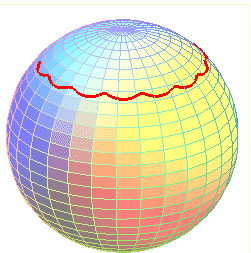

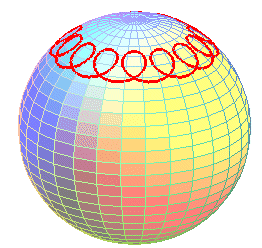
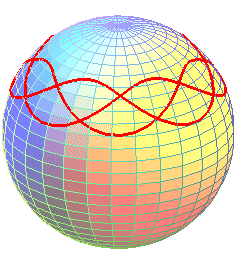

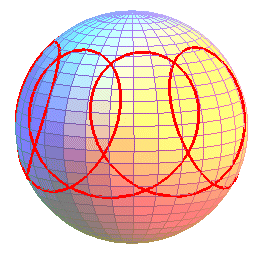
| next curve | previous curve | 2D curves | 3D curves | surfaces | fractals | polyhedra |
SPINNING TOP FESTOON
 |
 |
 |
 |
 |
 |
| Movement studied by Lagrange in 1788 and Poisson in 1809.
Other name: gyroscope curve. See: Paul Appell : cours de mecanique rationnelle, tome 2, pages 195 to 211 |
| System of differential equations of the second order obtained by considering the angular momentum: k = J / I where J is the moment of inertia of the top with respect to its axis and I the moment of inertia with respect to a line perpendicular to the axis passing through the contact point O. First integrals:
Differential equation of the curve: |
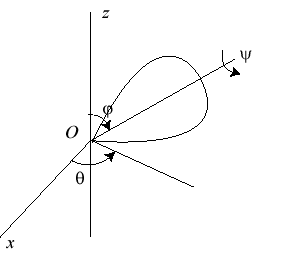
|
The festoon of a spinning top is the spherical curve described by a point on the axis of revolution of a top (or a gyroscope) rotating around its tip, which is supposed to remain immobile throughout time.
The limit case of a spinning top with zero moment of inertia or that does not spin gives the curve of the spherical pendulum.
We get curves that are similar to curved trochoids, composed of a sequence of undulations or arches joining alternatively two parallel curves (obtained for the values for which the above polynomial P cancels). The case of the arches, similar to that of the spherical cycloids, is obtained when the initial speed is zero.
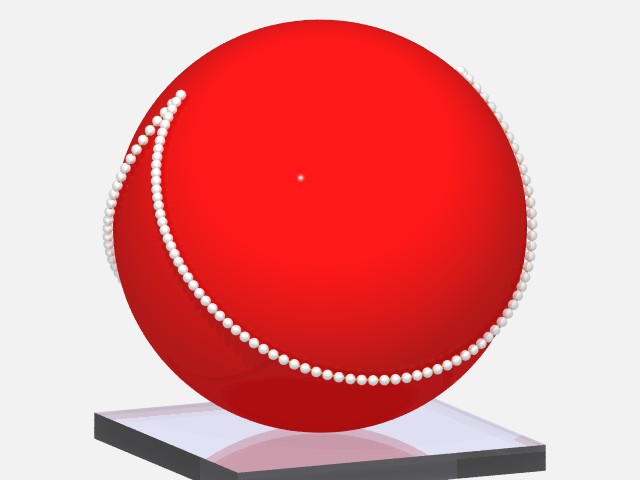
Festoon with two arches (Alain Esculier)
 |
|
| next curve | previous curve | 2D curves | 3D curves | surfaces | fractals | polyhedra |
© Robert FERRÉOL 2018